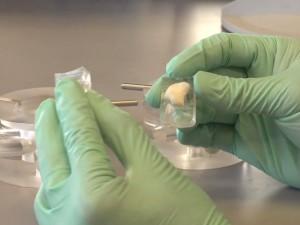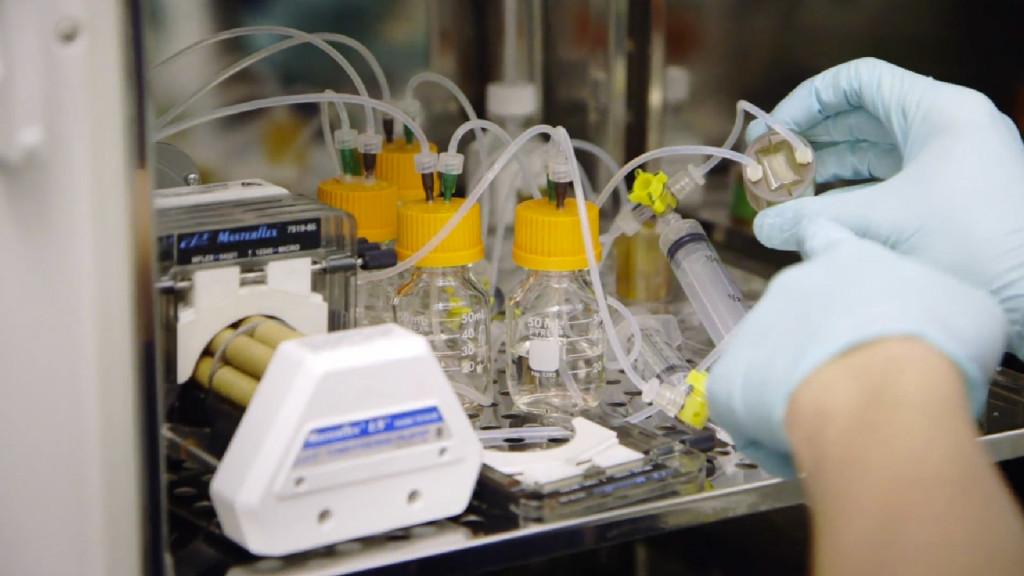 The human body has amazing capacities for repairing itself, but it’s far from perfect; some injuries or deformities are too much for the body itself to make whole. For ages, that’s been accepted as a fact of life, but as technology develops, there are fewer and fewer unfixable things that can befall a person. In the 19th century, it would have seemed inconceivable that bacterial infections could one day be killed off with a simple pill, but antibiotics would be arriving soon. Today, most people would say that growing real human body parts is impossible, but we’re starting to learn that that’s not the case.
The human body has amazing capacities for repairing itself, but it’s far from perfect; some injuries or deformities are too much for the body itself to make whole. For ages, that’s been accepted as a fact of life, but as technology develops, there are fewer and fewer unfixable things that can befall a person. In the 19th century, it would have seemed inconceivable that bacterial infections could one day be killed off with a simple pill, but antibiotics would be arriving soon. Today, most people would say that growing real human body parts is impossible, but we’re starting to learn that that’s not the case.
Nina Tandon has been growing human tissue since her days as a biomedical engineering student at Columbia University. She began experimenting with cardiac and skin tissue, then moved on to one of the trickiest types of organic material – bone. Tandon is the co-founder and CEO of EpiBone, a startup that has discovered a way to literally grow human bones.
Repairing damaged bones is painful and challenging, as anyone who’s ever broken a bone will know. It gets even more difficult when bone is actually missing due to disease or congenital deformity, or when a bone is broken so severely that it can’t fuse itself back together without additional help. Bone grafts are painful, unpredictable and carry a host of potential complications, so they’ve been a major focus for the medical industry lately. With 3D printing and other technology sweeping in to fix even the most challenging medical issues, bone grafts are a priority, and we’ve seen many researchers take on the issue with an intriguing variety of approaches.
 What most of those approaches have in common, though, is 3D technology. Some organizations are printing synthetic bone grafts with biocompatible materials like ceramics; others are using animal bones as a base for regenerating human bones. EpiBone falls into the second category, but what makes the company particularly interesting is that their process uses a patient’s own cells to grow new bones outside the body.
What most of those approaches have in common, though, is 3D technology. Some organizations are printing synthetic bone grafts with biocompatible materials like ceramics; others are using animal bones as a base for regenerating human bones. EpiBone falls into the second category, but what makes the company particularly interesting is that their process uses a patient’s own cells to grow new bones outside the body.
EpiBone’s technique is surprisingly simple. A CT scan is taken of the patient’s damaged bone, and a 3D model is created. That 3D model is used to CNC mill an animal – usually cow – bone into the exact shape of the graft that needs to be implanted into the patient. Then, fat cells are taken from the patient, and stem cells from the fat are isolated. (Stem cells from fat are capable of growing into many other different forms of tissue, which makes them ideal for this process.) Those stem cells are placed into a bioreactor with the milled animal bone; the idea is that they will grow around the bone, essentially engulfing it – when the bioreactor is opened, a new bone comprised of the patient’s own cells will be ready for implant. Once it’s implanted, it continues to grow and merge with the bone around it.
Of course, it’s not really as simple as it sounds – conditions have to be carefully engineered and monitored for the cells to grow in the way that they need to. EpiBone is currently testing the procedure by growing cheekbones for pigs, and human trials could potentially begin in a few years, but there’s still a lot of work to be done. Ultimately, the team at EpiBone wants to try growing larger and more complex bones, as well. Check out the video below for a close-up look at the process. Discuss this new technology in the EpiBone 3D Printed Bone forum over at 3DPB.com.
Subscribe to Our Email Newsletter
Stay up-to-date on all the latest news from the 3D printing industry and receive information and offers from third party vendors.
You May Also Like
3D Printing News Briefs, April 13, 2024: Robotics, Orthotics, & Hypersonics
In 3D Printing News Briefs today, we’re focusing first on robotics, as Carnegie Mellon University’s new Robotics Innovation Center will house several community outreach programs, and Ugogo3D is now working...
Rail Giant Alstom Saves $15M with 3D Printing Automation Software 3D Spark
3D Spark has entered into a three-year deal with the rail giant Alstom. Alstom, a transport behemoth with annual revenues of $16 billion, specializes in the manufacture of trains, trams,...
Meltio Expands Global Reach with New Partnerships in the Americas and Europe
Spanish 3D printing manufacturer Meltio has expanded its sales network across the globe. With the addition of three new partners in the United States, Brazil, Argentina, and Italy, Meltio aims...
3D Printing Webinar and Event Roundup: April 7, 2024
Webinars and events in the 3D printing industry are picking back up this week! Sea-Air-Space is coming to Maryland, and SAE International is sponsoring a 3D Systems webinar about 3D...

































